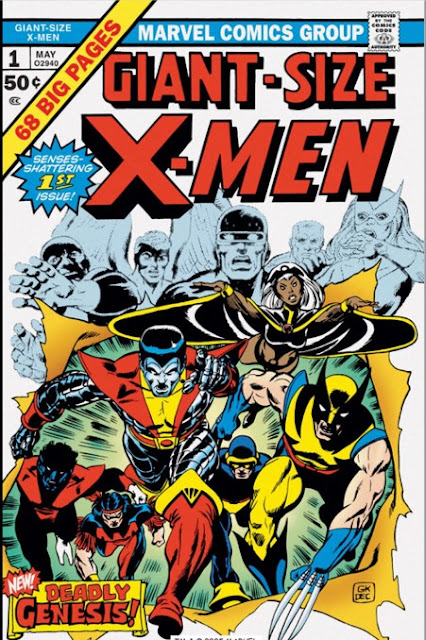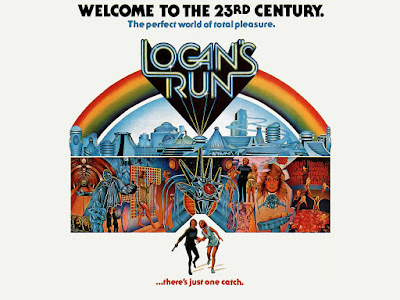A Look Back at The X-Men's Storm
It was a crisp Saturday evening in April 1975 when my older brother Steve and I stopped at The Book Nook store and I made my way to the comic book section, where I spotted one that immediately stood out. A group of super-heroes were bursting through the cover, tearing it open and charging straight at me. I was a sucker for group books and this one featured heroes I didn't recognize, although I recognized the team name: X-Men. It was Giant-Size X-Men #1, and it was the beginning of a beautiful relationship.
I had been reading comics, and specifically Marvel comics, for about four years at that point, and I knew of the X-Men, although only from reprints and the occasional guest appearance. But other than Wolverine, who had recently appeared in The Hulk, and Cyclops, these characters were unknown to me. From the start, I found myself gravitating to them like no other super-hero comic. I always liked team books the best. I suppose it had to do with all the character interaction and relationships. The Avengers had been a favorite for many years, particularly during the Englehart era, but in my mind, they were always the superstar team, what with the Big Three of Thor, Captain America, and Iron Man, and then other members like The Vision, Scarlet Witch, and Black Panther. So they were a little hard to relate to. My second team love had been DC's Legion of Super-Heroes. It was almost blasphemous. Back in the day, fans were generally divided down company lines - the term "Marvel Zombie" was coined for a reason. But I was drawn to the Legion by its teen heroes, their colorful costumes, and the space adventure. The tons of members and their myriad relationships were appealing to a pre-teen like myself. I could imagine myself in that world...to a point. The Legion was just a little too shiny, too plastic.
But this team of 'all-new, all-different' X-Men was much more relatable. Of the old X-Men, only Professor X and Cyclops stuck around, although Jean Grey would become a recurring character. The focus was primarily on the new mutants. Not only were they new, they were mutants from all over the world -Africa, Germany, Canada, even Russia! Sure, it was gimmicky, but it was a way to immediately differentiate them. Most Marvel heroes all seemed to live in New York. Here, we had a global presence.
In the first three years or so of the book (and note, the title was bimonthly for about the first two and a half years) the new characters -Nightcrawler, Colossus, Wolverine, and Storm - were all rounded out, complete with fears, doubts, and desires. I took an immediate liking to Nightcrawler, the blue-skinned misfit, as I, a young girl who loved Star Trek and comics, frequently felt like a misfit in my small town. But over time, it was Storm who really caught my attention.
Comics were not especially enlightened when it came to the portrayal of women characters back in the early 1970s. For the most part, women were still supporting characters, primarily included to serve a role in a male hero's life as a girlfriend, wife, or sister. Women super-heroes fared little better than the civilians; often, they were under-powered and would faint after using their typically unimpressive abilities. Being rescued by their male team-mates was commonplace. As a young girl, I found them unworthy of my interest. Therefore none of my favorite heroes were female characters. Until Storm came along.
I will admit, in hindsight, Storm's origin has more than a hint of racism. Looking back from 2020 to 1975, on almost any topic, is typically problematic. This is no exception. In Giant-Size X-Men #1, she is depicted as presenting herself as a weather goddess to a group of African tribesmen who seem like they would be more at home in a Tarzan movie from the 1940s -which might be the creative team's main reference source. Professor X persuades Ororo (Storm) to come see "the Big City," and she joins the X-Men. It's cringe-inducing today, but it's been largely retained, and expanded upon. At the time, it completely went over my head and I accepted it, without thought. I was only ten, after all.
However, under the team of writer Chris Claremont and artist Dave Cockrum, Storm had a dignity to her, an inner strength, that became apparent quickly. She was also incredibly powerful. One of the first scenes that made a lasting impression on me was in X-Men #97, where the team unexpectedly winds up battling erstwhile members Havok and Polaris, as well as old foe Erik the Red. As Storm and Polaris duel in the sky, Polaris says they'll have to "call this game a draw." Ororo becomes righteously offended that Polaris would refer to her vicious attack as a game, and summons her full, formidable power to put Polaris down. Cockrum depicts Storm as a force of nature, her face a ball of lightning, her luminous energy cracking the sky. It was a massive display of power, demonstrating that Storm was a heavy hitter, perhaps the most powerful of all the new X-Men. That made this young girl sit up and take notice!
I kept waiting for the other shoe to drop though. I felt certain she was going to become Colossus' girlfriend (thankfully, she did not) or that they would use her claustrophobia as her kryptonite (it was used a few times, but not to excess). Ororo had nurturing qualities, and in many ways was an Earth mother figure to the group, but this did not diminish her independence nor her fierceness. She was a bit like Kali, the Hindu goddess, who has aspects both terrifying and loving. In other words, she was multi-dimensional, if larger than life. But she was a female character I could get behind, at last.
It was so gratifying to finally have a female hero who could hold her own, who was respected by her team mates, who was confident and capable, who had her own life, and who did not need to be rescued or saved all the time. In other words, she was like most of the male characters I had been reading.
Storm has continued to be an important character at Marvel, although she's no longer alone as a female character with agency or standing. And that's a very good thing.








Yeah, Storm really is one of the greatest of Marvel's female superheroes, and arguably the best to come out of the 1970s. I like that she was formidable out of the gate, rather than being an underused and underappreciated side character or even damsel in distress. (In fact, looking back on it now, I think it's a great disservice to the character that she wasn't included among those featured in the Marvel Superhero Women book - while, say, Hela, a villain, was).
ReplyDeleteAnd yeah, I came to X-men a little later than you did, with issue #120, but they immediately clicked for me, too - I followed the title religiously for several years afterward.
Hi Edo, I hadn't thought about the Super-Hero Women book, but you have a point. Maybe since it came out in 1977 there simply wasn't enough time form her first appearance to when the book was put together (maybe in 1976?) for anyone to recognize her significance? Too short a time I reckon. Another thing about Storm that I like is she has no connection to an existing Marvel hero, unlike She-Hulk, the original Ms. Marvel (now Captain Marvel), the tenuous connection of Spider-Woman (name only really), or anyone else. Although I didn't go into it, I never cared for her marriage to Black Panther. That just seemed very contrived.
DeleteOh, man. Don't get me started on the Storm/BP marriage. Contrived is putting it mildly. Personally, I don't recognize any love interest for T'Challa other than Monica Lynne (in the comics anyway - I'm more flexible about the MCU stuff).
Delete